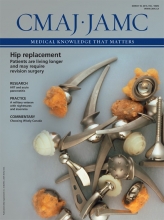The move to regulate nicotine-containing electronic cigarettes has highlighted the lack of research about their health hazards, leading to a backlash from consumers who use the device as a nicotine-replacement therapy.
Though some users think these e-cigarettes are a godsend, helping them quit or cut back on real cigarettes, the lack of research into their long-term effects is “a cause for concern,” says Dr. Milan Khara, clinical director of the Tobacco Dependence Clinic at Vancouver Coastal Health Addiction Services in British Columbia.
“Though it is highly probable that e-cigarette vapour is much less harmful than smoke, it is not the case that the vapour is certainly harmless,” Khara says in an email.
Despite the lack of conclusive evidence one way or the other, many countries have taken aggressive approaches to the regulation of e-cigarettes. In Canada, e-cigarettes that deliver nicotine are considered drugs under the Food and Drugs Act, says Health Canada spokesperson Leslie Meerburg. Companies wishing to sell them must submit scientific evidence to Health Canada demonstrating safety, quality and efficacy. To date, none of these products has been granted marketing authorization.
E-cigarettes without nicotine can be legally sold in Canada, but are subject to the Canada Consumer Product Safety Act, which means companies must ensure the products they manufacture, import, advertise or sell don’t pose dangers to human health or safety.
In Nova Scotia, a seller of nicotine-containing e-cigarettes recently received a cease-and-desist letter from Health Canada for violating the Food and Drugs Act. The province’s government has also promised to soon create e-cigarette regulations. Store owners in other parts of the country have also received cease-and-desist letters, though several are disputing the government’s request to stop selling nicotine-containing e-cigarettes.

Users say e-cigarettes are safer than regular cigarettes, but regulators remain cautious because of a lack of evidence about safety or benefit.
Image courtesy of goldy/Thinkstock
In Europe, regulation of nicotine-containing e-cigarettes depends on where you live. A court in France recently ruled that these e-cigarettes qualify as tobacco products and must be sold by registered tobacconists. The European Union, however, ruled that e-cigarettes can be sold as consumer products, though countries could independently decide whether to regulate them as medical devices.
E-cigarettes marketed in the United States as therapeutic devices are regulated by the Food and Drug Administration (FDA) Center for Drug Evaluation and Research. Other e-cigarettes are not yet regulated, though a rule has been proposed to bring them under the control of the FDA Center for Tobacco Products.
The FDA does warn consumers, however, that little is known about the potential risks, possible benefits or how much nicotine or other chemicals are being inhaled. “Additionally, it is not known if e-cigarettes may lead young people to try other tobacco products, including conventional cigarettes, which are known to cause disease and lead to premature death,” the agency warned in a recent release.
Some parts of the US aren’t waiting for the FDA to issue regulations. New York City has banned all e-cigarettes in bars, restaurants, parks and other public areas. Similar measures have been taken in Utah, North Dakota, Arkansas and areas of California.
Regulated or not, e-cigarettes are touted by many users, or “vapers,” as a blessing. Sean Phillips, 31, of Toronto, Ontario, has been using e-cigarettes with nicotine “e-juice” since 2009, after smoking for 13 years. He once smoked up to 40 cigarettes a day.
“I knew if I didn't quit, it would eventually kill me, but my will power is very weak and I was hopelessly addicted,” he says.
He stopped smoking after finding “a good e-cigarette,” says Phillips, and doesn’t plan to start again as long as he has access to “e-juice.”
Phillips purchases his hardware from a Canadian vendor but buys liquid nicotine online from the United States. “I usually tell the US vendor to not label the juice as containing nicotine, even though it does, so it will get past customs. I have made over 40 juice orders from the States and only lost one to customs agents,” he says. “Cigarettes are killers and are available at every corner store. E-cigarettes are many magnitudes safer than cigarettes, yet face a ban.”
John White, 49, of Kitchener, Ont., says he exhausted all his options for quitting smoking before trying an e-cigarette with nicotine. “I couldn't believe it. I didn't even try, and I had quit smoking,” he says.
White says he’s aware of the lack of research on e-cigarettes. Although he would be interested in seeing more research, White thinks e-cigarettes should be evaluated in comparison with cigarettes in terms of research and health hazards.











